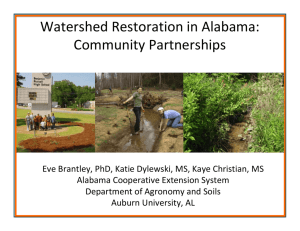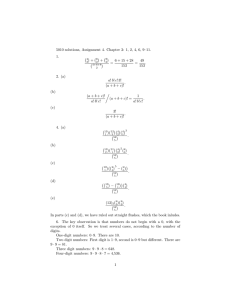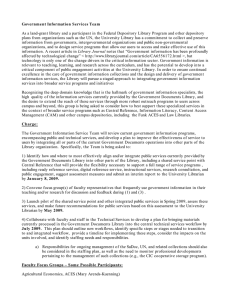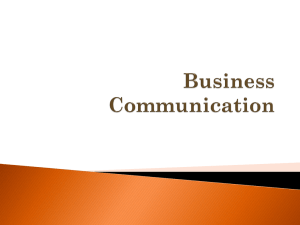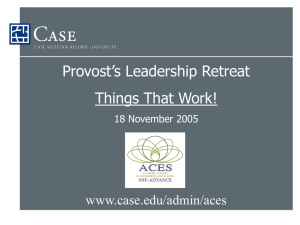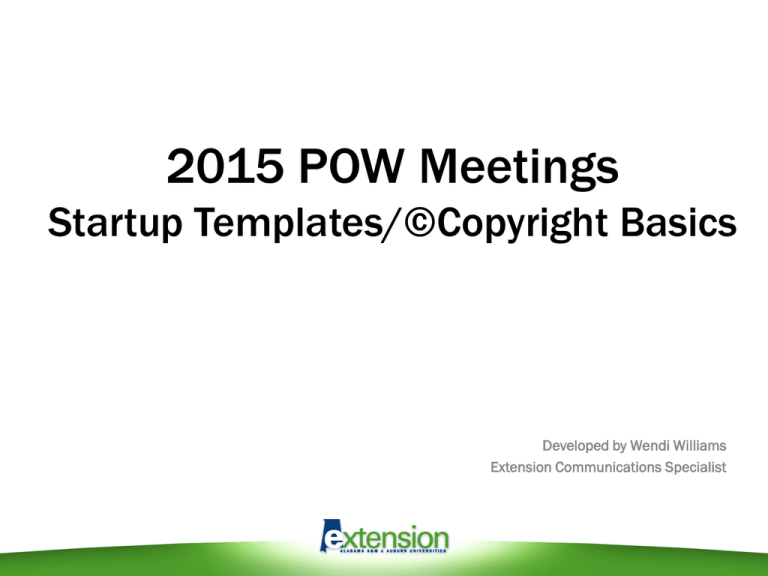
2015 POW Meetings
Startup Templates/©Copyright Basics
Developed by Wendi Williams
Extension Communications Specialist
Outline
•
•
•
•
•
•
Startup Templates
What is copyright?
What can/cannot be copyrighted?
ACES copyright/publishing statements
Copyright vs. Intellectual Property
Fair Use Laws
Startup Templates
ACES Intranet: Build Your Own
https://sites.aces.edu/intranet/comm/Resources/Templates,%20Logos
%20and%20Forms.aspx
The site contains:
Publication Templates
PowerPoint Presentation Templates
Forms: Photography/Video Release
Alabama Extension Logos
Copyright Basics
• Copyright – Federal protection extended to
authors for “original” published or unpublished
work (Title 17, U.S. Code)
• Includes: Literary, dramatic, musical, artistic and
some intellectual works – pictorial, graphic, and
sculptural works, movies, sound recordings and
architectural works
• Gives the author the exclusive right to allow
others to use his/her work
Copyright Basics
• Work made for hire – Employer is
considered the author
• Work created within your job description or
work specially ordered or commissioned:
instructional text (curriculums/manuals),
tests, supplementary work, translation, etc.
Copyright Basics
• Ø Copyright Protected: – Titles, names,
short phrases, slogans, as well as
symbols/designs, ideas,
methods/procedures, etc.
• Includes common use/property items:
Calendars, rulers, tables from public
documents, and any choreographed works,
improvisational speeches, or performances
not written or recorded
Copyright Basics
• When is work protected? – Copyright is
secured when it appears in a fixed copy or
phonorecording for the first time.
• Fixed Copies: Objects you can read or see
with the aid of a machine – books, films,
sheet music, or manuscripts, etc.
Copyright Basics
• When is work protected? – Publication is
no longer the “key” to obtaining copyright –
However, publication is important to
copyright owners.
• Publication is the distribution of copies or
phonorecords of work for sale, transfer of
ownership, rental, lease, or lending.
Copyright Basics
• Prior to 1978 – Publication was secured
through publication – if not in compliance
then work was considered “Public domain”
• Copyright duration: Works created on or
after Jan 1, 1978, is protected from creation
to the extent of author’s life PLUS 70 years
after author’s death
Copyright Basics
• Copyright duration: Works for hire (works
with anonymous/pseudonymous (unless
author’s name is revealed in Copyright
Office) – copyright will last 95 years from
publication or 120 years from creation,
whichever is shorter
Copyright Basics
• Copyright Registration: – Copyright
registration is legal formality and needed
for copyright infringement suits – if work is
produced in the United States
• Complete the application, pay a nonrefundable fee, and submit to U. S.
Copyright Office – Library of Congress.
ACES Copyright Statements
What appears on ACES “numbered” publications…
• ACES Copyright/Publication/Civil Rights Statements
The Alabama Cooperative Extension System (Alabama
A&M University and Auburn University), is an equal
opportunity educator and employer. Everyone is
welcome!
New/Revised Month/Year, Pub #
© 2015 by the Alabama Cooperative Extension System.
All rights reserved.
Civil Rights Statements
Extended Version
• ACES Copyright/Publication/Civil Rights Statement
Appropriate for use on the ACES official website, long documents, and printed
and digital platforms that are recognized as having more available space.
• Alabama Cooperative Extension System (Alabama A&M University and
Auburn University) is committed to affirmative action, equal opportunity
and the diversity of its workforce. Educational programs serve all people
regardless of race, color, national origin, age, disability, sex, gender
identity, marital status, family/parental status, religion, sexual orientation,
political beliefs, reprisal, or because all or a part of an individual’s income
is derived from any public assistance program.
Intellectual Property
• Intellectual property (IP) refers to “creations of
the mind, such as inventions; literary and
artistic works; designs; and symbols, names
and images used in commerce.” IP is protected
by law and includes:
patents, copyright and trademarks – enables
people to earn recognition and/or money from
what they invent or create (WIPO, n.d.)
Fair Use Laws
• Fair use allows use of copyrighted materials
without obtaining permission from the author.
Fair use is based on certain criteria.
• However, ACES policies/procedures require that
staff obtain permission for use of printed or
digital material, including photos.
References
•
Purdue University-University Copyright Office. (2003-2009). Copyright overview. Retrieved from
https://www.lib.purdue.edu/uco/CopyrightBasics/index.html.
•
United States Copyright Office. (2012, May). Copyright basics. Retrieved from
http://www.copyright.gov/circs/circ01.pdf.
•
World Intellectual Property Organization. (n.d.) . What is intellectual property? Retrieved from
http://www.wipo.int/about-ip/en/.
Questions? Please contact Wendi Williams
Phone: (256) 372-4953 or williw1@aces.edu

